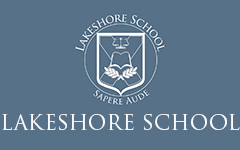



This summer the Level Up Camp presented puppet plays based on children’s stories. We had lots of fun creating the scenery, making the props and the puppets, and presenting the plays to the younger campers and our families.




This summer the Level Up Camp presented puppet plays based on children’s stories. We had lots of fun creating the scenery, making the props and the puppets, and presenting the plays to the younger campers and our families.

AT LAST, OUR HARD WORK CAN BE REVEALED! This has been a difficult secret to keep, but after weeks of hard work, we can finally share the product of Lakeshore’s first-ever Costume Creations program! First, we designed our costume by drawing an illustration to plan what costume pieces needed to be made. In this design,…

After the Diver is weighed down properly, we put the cap on tightly. Something really neat happens when you squeeze the bottle… the Diver goes down to the bottom of the bottle!
How does it work? When you squeeze the bottle, the water can’t compress, but the air does, just a bit. So the air bubble inside the Diver shrinks, and the Diver sinks down to the bottom of the bottle. When you let the bottle go, the pressure is released, and the air bubble returns to its original size, so the Diver comes back up to the top of the water!
Ask either of our Junior Scientists to show you! This really is a cool science experiment.

Lakeshore School is pleased to offer a NEW Creative Campus after school program, open to ages 8+ up to adult. This is intended for students (and non-students) who are interested in learning basic machine sewing. We will copy and cut a paper pattern and sew your own pair of pyjama pants in time for winter…

Hot water from a kettle heats up the air inside a plastic bottle, and adds water vapour into the air. When you seal the bottle and put it in ice water, the water vapour condenses and the air cools down, creating a smal vaccuum inside the bottle. Here, the bottle is being sucked in by the vaccuum.
Vinegar reacts with the calcium carbonate in an egg’s shell to create little bubbles of carbon dioxide as it dissolves the shell. After 24 hours of soaking in vinegar, a raw egg’s shell is fully dissolved and it feels soft when you touch it. The egg’s membrane is surprisingly strong!
Vinegar also has a chemical reaction with baking soda (sodium bicarbonate) and reacts very strongly by making lots of fizzy bubbles containing carbon dioxide. We performed several experiments with carbon dioxide gas (CO2) such as extinguishing a candle and blowing up balloons.
We also used pH strips and Red Cabbage Indicator to investigate kitchen chemicals and classify them as Acids or Bases. We learned that acids and bases react with each other and some can make very poisonous gases!
The next few sessions of Level Up: Junior Science will investigate things that float, and how ships sink!

We are reading ‘The City of Ember’ by Jeanne DuPrau. It’s a YA novel set in a dark city where everything is old and slowly breaking down. Two children, Lina and Doon, start to investigate the hidden areas and discover a great big secret….
We meet on Tuesdays from 4:30-5:30, and have a discussion about aspects of the book’s theme, the characters, and interesting plot points. To add to our literacy skills, we discuss unfamiliar vocabulary and read sections out loud to each other. The best part, according to the club members, is snack time! We have only started reading the first two chapters, so if you know someone in grade 3-8 who would enjoy reading along with us, please contact the school to register.
Happy reading!
~ Ms. Coe
